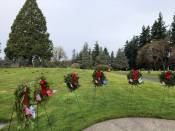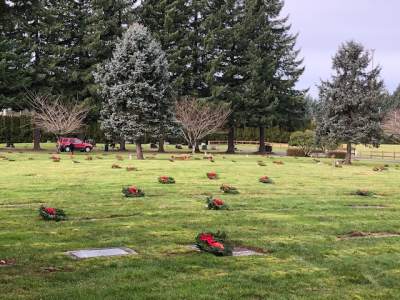Cemetery
About the Cemetery
In 1883, the Camas Colony Company, formed by Oregonian publisher Henry Pittock and a group of investors, sought land near La Camas Lake on which to establish a paper mill that would produce newsprint for the Oregonian. The company plotted the cemetery in 1885, shortly after establishment of the mill, but their temporary layout markers were lost, and eventually so too were the plats. Although there is uncertainty over the early years, many believe the land the cemetery now occupies was originally owned by Donald Stearns, a close associate of Pittock.
The Women’s Civic Club maintained the affairs of the cemetery from 1910 through 1914. In 1914, a deed was recorded giving ownership of the cemetery land to the recently-incorporated City of Camas, granted by the Pittock and Leadbetter families. The operation of the cemetery was then performed by the City of Camas for six years until the Camas Cemetery Association was formed. The association operated the cemetery for more than eighty years, doing the majority of the work in creating what we know today as the Camas Cemetery, before transferring ownership and operation of the 30-acre cemetery back to the City of Camas on January 1st, 2007.
Throughout its history, several local cemeteries have incorporated their graves into the Camas Cemetery. In 1984, the Camas Catholic Cemetery relocated a number of its graves and erected a memorial listing the names of all those moved. Previously known unofficially as The Dead Lake and Fallen Leaf Cemetery, many others were also relocated from this cemetery over the years, including some of our oldest-dated headstones, belonging to the Farrell, Karnath, and Reilly families.

Visitors to the cemetery will notice in the Southeast section of the cemetery is the “Pioneer Section.” In this section, visitors can find graves from the original plotting of the cemetery, such as the 1881 interment of Lieutenant Henry Walton, our oldest original grave. Also prominent in this section is a small, red-brick mausoleum erected by Donald Stearns to hold his beloved wife, Clara Dunaway, who died of pneumonia. Although the small brick mausoleum now rests empty, it has the current distinction of bearing the Wall of Remembrance.


